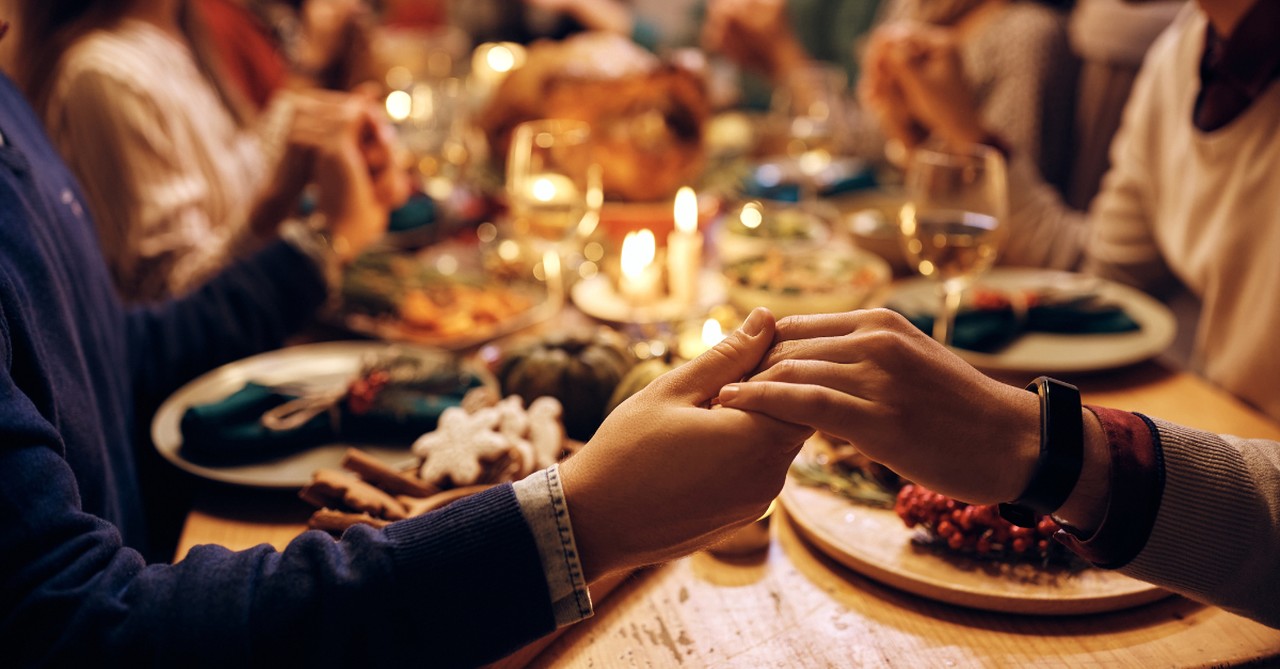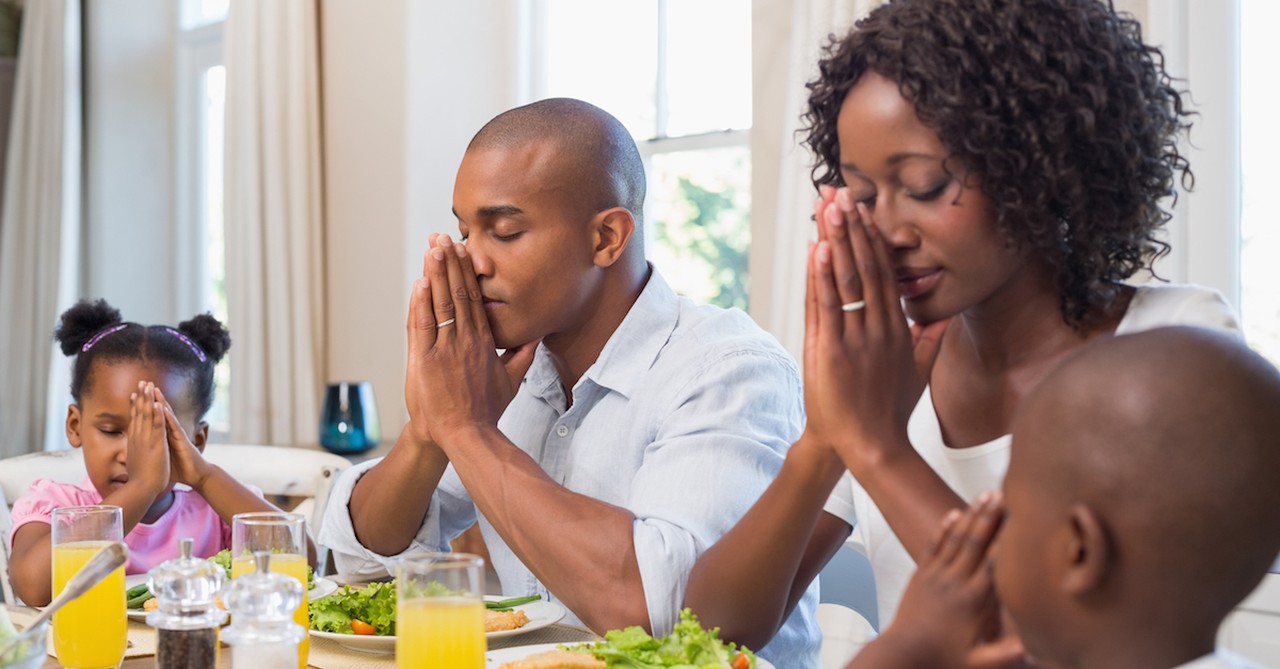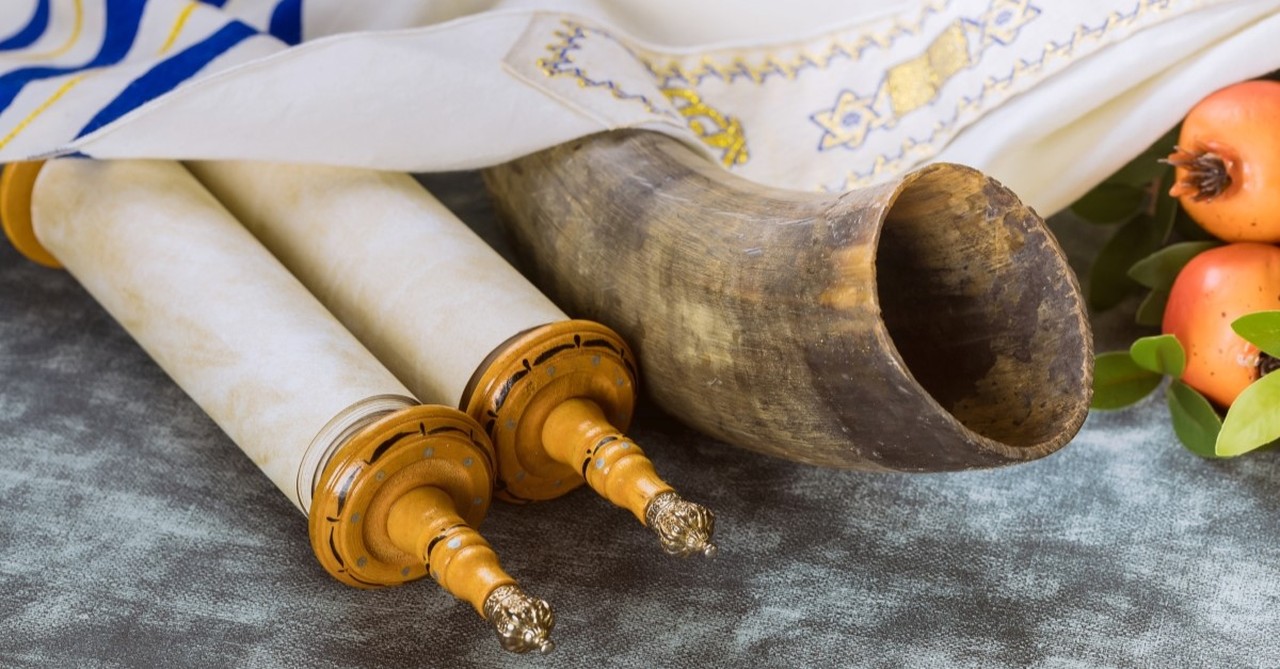5 Jewish Fall Feasts That Remind Us What Jesus Has Done for Us

God established the Jewish fall feasts described in the Old Testament for people to remember his past faithfulness, reflect on their current relationships with him, and anticipate his future promises. These feasts also point to the redemptive work of Jesus described in the New Testament. By understanding the symbolic significance of the Jewish fall feasts, we can see the continuity of God’s redemptive plan and appreciate how these ancient practices reveal the depth of what Jesus has accomplished for us.
Let’s explore 5 Jewish fall feasts that remind us of what Jesus has done for us.
Photo Credit: ©Getty/Drazen Zigic
1. Rosh Hashanah (Feast of Trumpets)

1. Rosh Hashanah (Feast of Trumpets)
SLIDE 1 OF 5
Rosh Hashanah, the Feast of Trumpets, marks the beginning of the Jewish New Year. It’s a time of reflection and repentance, announced by the sounding of the shofar (a ram’s horn) as a call to awaken the soul and prepare for the coming days of judgment and atonement. Leviticus 23:23-25 describes Rosh Hashanah: “The Lord said to Moses, ‘Say to the Israelites: “On the first day of the seventh month you are to have a day of sabbath rest, a sacred assembly commemorated with trumpet blasts. Do no regular work, but present a food offering to the Lord.’” The trumpet blasts serve as a spiritual alarm, urging people to examine their lives and turn back to God. This feast initiates the 10 Days of Awe, a period of introspection and repentance that culminates in Yom Kippur.
For Christians, Rosh Hashanah symbolizes the future return of Jesus. In the New Testament, the sounding of the trumpet is often associated with Jesus’ second coming and the resurrection of the dead. Paul writes in 1 Thessalonians 4:16-17: “For the Lord himself will come down from heaven, with a loud command, with the voice of the archangel and with the trumpet call of God, and the dead in Christ will rise first. After that, we who are still alive and are left will be caught up together with them in the clouds to meet the Lord in the air. And so we will be with the Lord forever.” The shofar blast of Rosh Hashanah is a prophetic reminder of this future event. It calls us to live in a state of readiness and repentance, always prepared for the day when Jesus will return to judge the world and establish his eternal kingdom.
Photo Credit: ©GettyImages/Alexander Donin
2. The 10 Days of Awe

2. The 10 Days of Awe
SLIDE 2 OF 5
The 10 Days of Awe, also known as the Days of Repentance, are the 10 days between Rosh Hashanah and Yom Kippur. These days are a time of intense reflection, repentance, and seeking forgiveness. They are a period of spiritual preparation for Yom Kippur, the holiest day on the Jewish calendar. Although the 10 Days of Awe are not mentioned specifically in the Bible, they are deeply rooted in Jewish tradition. This period is seen as a time when God opens the Book of Life and begins to judge his people. The days between Rosh Hashanah and Yom Kippur are an opportunity for people to repent, make amends, and seek to be inscribed in the Book of Life for the coming year.
During this time, Jews engage in prayer, fasting, and acts of charity, seeking to reconcile with God and with other people. The focus is on introspection and turning away from sin to return to a right relationship with God. For Christians, the 10 Days of Awe can be seen as a representation of the ongoing call to repentance in the life of a believer. While we live under the grace of God through Jesus, the New Testament repeatedly emphasizes the importance of repentance as a way of maintaining our relationship with God.
Acts 3:19 says: “Repent, then, and turn to God, so that your sins may be wiped out, that times of refreshing may come from the Lord.” These days remind us that our lives are a continuous journey of repentance, not just a one-time event. Just as the Jewish people seek to be inscribed in the Book of Life each year, Christians understand that our names are written in the Lamb’s Book of Life through our faith in Jesus, but we are also called to live lives worthy of that calling (Ephesians 4:1) by pursuing holiness.
Photo Credit: Wavebreakmedia
3. Yom Kippur (Day of Atonement)

3. Yom Kippur (Day of Atonement)
SLIDE 3 OF 5
Yom Kippur, the Day of Atonement, is the most solemn and sacred day in the Jewish calendar. It’s a day dedicated to fasting, prayer, and repentance. On this day, the high priest would enter the Holy of Holies to offer sacrifices for the sins of the people, seeking reconciliation with God. Leviticus 16 provides detailed instructions for Yom Kippur. The high priest would offer a bull as a sin offering for himself and his household, and a goat as a sin offering for the people. The blood of the goat was sprinkled on the mercy seat inside the Holy of Holies, symbolizing the atonement of sins. Also, a second goat – the scapegoat – was sent into the wilderness, carrying away the sins of the people.
Leviticus 16:29-30 says: “This is to be a lasting ordinance for you: On the tenth day of the seventh month you must deny yourselves and not do any work – whether native-born or a foreigner residing among you – because on this day atonement will be made for you, to cleanse you. Then, before the Lord, you will be clean from all your sins.” During biblical times, Yom Kippur was a day of national cleansing and reconciliation with God, emphasizing the seriousness of sin and the need for atonement. Yom Kippur finds its ultimate fulfillment in Jesus’ sacrifice for our sins. Jesus is the ultimate high priest, who offers not the blood of animals, but his own blood, for the atonement of sins.
Hebrews 9:11-12 explains: “But when Christ came as high priest of the good things that are now already here, he went through the greater and more perfect tabernacle that is not made with human hands, that is to say, is not a part of this creation. He did not enter by means of the blood of goats and calves; but he entered the Most Holy Place once for all by his own blood, thus obtaining eternal redemption.” Jesus is both the high priest and the perfect sacrifice, offering himself once for all to cleanse us from sin. For us as Christians, Yom Kippur is a powerful reminder of the completeness of Jesus’ atonement. His sacrifice on the cross fully satisfied God’s justice, and through faith in him, we are reconciled to God, forgiven, and made clean. This day invites us to reflect on the magnitude of Jesus’ sacrifice and to respond with gratitude, repentance, and a renewed commitment to live in his grace.
Photo Credit: ©Getty Images/photovs
4. Sukkot (Feast of Tabernacles)

4. Sukkot (Feast of Tabernacles)
SLIDE 4 OF 5
Sukkot, or the Feast of Tabernacles, is a joyful celebration that commemorates God’s provision for Israel during their 40 years of wandering in the wilderness. It is also a harvest festival, celebrating the gathering of crops. During Sukkot, Jews build and dwell in temporary shelters (sukkot) to remember how God provided for them in the desert.
Leviticus 23:39-43 commands the observance of Sukkot: “So beginning with the fifteenth day of the seventh month, after you have gathered the crops of the land, celebrate the festival to the Lord for seven days; the first day is a day of sabbath rest, and the eighth day also is a day of sabbath rest. On the first day you are to take branches from luxuriant trees – from palms, willows and other leafy trees – and rejoice before the Lord your God for seven days.” The Israelites were to live in these temporary shelters for seven days, recalling how God provided them with shelter, food, and water in the wilderness. Sukkot is a time of rejoicing in God’s faithfulness and provision, both in the past and in the present harvest. In the New Testament, Sukkot finds its fulfillment in Jesus, who “became flesh and made his dwelling among us” (John 1:14). Just as God the Father dwelled with Israel in the wilderness, providing for their needs, Jesus dwells with us and the Holy Spirit dwells within us. Sukkot also foreshadows the future when God will once again dwell with his people in the new heaven and new earth.
Revelation 21:3 says: “And I heard a loud voice from the throne saying, ‘Look! God’s dwelling place is now among the people, and he will dwell with them. They will be his people, and God himself will be with them and be their God.’” As Christians, Sukkot is a time to rejoice in God’s provision – not only for our physical needs, but also for our spiritual needs. It’s a reminder that we are sojourners in this world, living in temporary “tents,” but one day we will dwell with God forever in a place of eternal security and joy.
Photo Credit: ©iStock/Getty Images Plus/skynesher
5. Shemini Atzeret (Eighth Day of Assembly)

5. Shemini Atzeret (Eighth Day of Assembly)
SLIDE 5 OF 5
Shemini Atzeret, which means “Eighth Day of Assembly,” is a separate yet connected festival that follows immediately after Sukkot. It’s a day of solemn assembly that marks the transition from the joyous celebration of Sukkot to a more contemplative reflection on God’s ongoing provision.
Leviticus 23:36 mentions this day: “For seven days present food offerings to the Lord, and on the eighth day hold a sacred assembly and present a food offering to the Lord. It is the closing special assembly; do no regular work.” Shemini Atzeret concludes the Jewish fall festival season. It’s a time to pause and reflect on the blessings of the past and the hopes for the future. Shemini Atzeret can be seen as a symbol of the new beginning we have in Christ. Just as the eighth day in Jewish thought often represents new beginnings (as the day after the completion of a week), this day can remind Christians of the new life and eternal rest we find in Jesus.
Hebrews 4:9-10 speaks about this rest: “There remains, then, a Sabbath-rest for the people of God; for anyone who enters God’s rest also rests from their works, just as God did from his.” Shemini Atzeret foreshadows the ultimate rest we can experience in relationships with Jesus, where we stop striving and fully trust in Jesus’ finished work for our salvation. As Christians, this day invites us to pray and meditate on the significance of what Jesus has done for us, and then renew our commitment to walk closely with Jesus. It also points us forward to the eternal rest we will enjoy in God’s presence when God’s kingdom has fully come.
In conclusion, the Jewish fall feasts offer wonderful insights into the vital work Jesus has done for us. Each feast reveals different aspects of God’s redemptive plan as fulfilled in Jesus. Understanding these feasts helps us understand the continuity between the Old and New Testaments. The Jewish fall feasts remind us that God’s plan for humanity has always been centered on reconciliation and restoration – culminating in the life, death, and resurrection of Jesus. These feasts encourage us to live with grateful mindfulness of the great work Jesus has accomplished on our behalf.
So when Rosh Hashanah arrives, how should Christians respond—with observance, reflection, or simply gratitude that Christ has fulfilled the law? See what other believers think and join the conversation on Crosswalk Forums!
Photo Credit: ©GettyImages/Shironosov

Originally published September 10, 2024.









